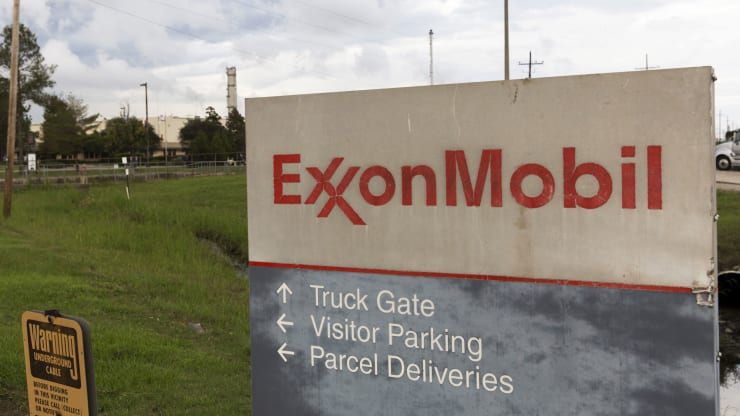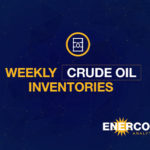Exxon Mobil’s been in the Dow in some form since 1928, but its tenure as the longest-serving component is coming to an end.
On Monday, S&P Dow Jones Indices announced the largest changes to the 30-stock benchmark in seven years. Along with Exxon, which is being replaced by Salesforce, Pfizer and Raytheon Technologies are being removed in favor of Amgen and Honeywell International.

Exxon’s removal is a “sign of the times,” Raymond James said, as the company — and energy sector broadly — falters, a weakness made all the more apparent by strength in technology names.
Energy now makes up just 2.5% of the S&P 500, compared with 6.84% five years ago, and 10.89% 10 years ago. Technology has jumped from 18.48% of the index in 2010 to 28.17% today.
Edward Jones’ Jennifer Rowland noted that five tech stocks — Apple, Microsoft, Amazon, Alphabet and Facebook — are individually larger than the entire U.S. energy sector, which she called “pretty sobering” and “symbolic of just how far the energy sector has fallen over the past few years.”
Chevron is also in the Dow, meaning the energy sector was overrepresented in the benchmark to begin with. And with Apple’s coming 4-for-1 stock split, the Dow’s exposure to tech was set to decrease.
“In removing Exxon from the DJIA, the index provider is clearly being reactive, and indeed accentuating the extremely negative investor sentiment on just about anything tied to oil and gas,” Raymond James’ Pavel Molchanov wrote in a note to clients.
Exxon shares fell 3% on Tuesday after news of the removal.
“This represents a combination of the obviously rough COVID-impacted oil price backdrop but also concerns about the eventual peak in oil demand (which had emerged long before COVID) and ESG-related objections to fossil fuels generally,” he added. That said, Raymond James is upbeat on the sector and envisions recovery into 2021.
Over time the S&P 500 has surpassed the Dow in importance given that it better reflects the market and economy. Not only does it contain hundreds of additional stocks, it’s also market-cap weighted, which means that larger companies have a greater influence. The Dow, on the other hand, is price weighted.
Roughly $24 billion in actively managed funds tracks the Dow, dwarfed by the more than $300 billion following the S&P 500, according to data from Goldman Sachs. The gulf in passively managed funds tracking each one is even deeper.
Still, Exxon’s removal is significant nonetheless.

As recently as 2013 Exxon ruled the S&P 500 and market generally as the largest publicly traded U.S. company. In 2007 its market capitalization peaked above $500 billion, but has been slowly declining since. In the last five years the shares are down nearly 40%, and the company is now valued at $178.5 billion, according to data from FactSet. Salesforce, on the other hand, has seen its stock jump nearly 220% in the last five years, and currently has a market capitalization around $187.5 billion.
“This action does not affect our business nor the long-term fundamentals that support our strategy,” Exxon said in a statement. “Our portfolio is the strongest it has been in more than two decades, and our focus remains on creating shareholder value by responsibly meeting the world’s energy needs.”
Why Exxon and not Chevron?
Chevron shares, while also struggling this year, have returned roughly 25% over the last five years. Its stock price is currently a little more than double Exxon’s. While this is not relevant to investing generally, it is relevant to the price-weighted Dow. But that’s likely not the only reason Exxon got the ax instead of Chevron.
Molchanov noted that Chevron is “positioned much more straightforwardly as an oil producer” with a “high degree of operating leverage to commodity prices.” Exxon’s vertical integration, on the other hand, means heavy exposure to refining and chemicals.
“The index committee probably wanted to maintain some oil exposure, making Chevron the better choice to do so, especially given that chemical giant Dow Inc. … already represents the chemical industry in the index,” he added.
Goldman’s Neil Mehta added that Chevron is a better fit than Exxon due to three reasons: greater free cash flow generation, stronger balance sheet, and better operational and earnings execution. The firm has a buy rating on Chevron and a sell rating on Exxon.
[contextly_sidebar id=”O76rAMGkFRRPXc3Dfj7bAqssmvGlC3D2″]






